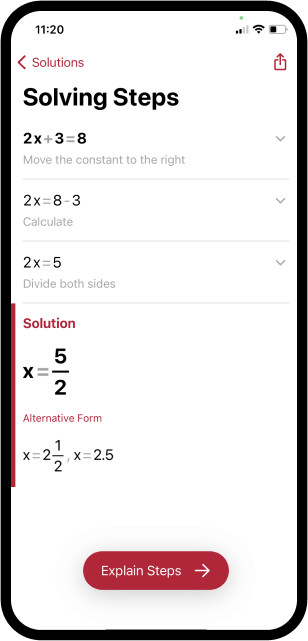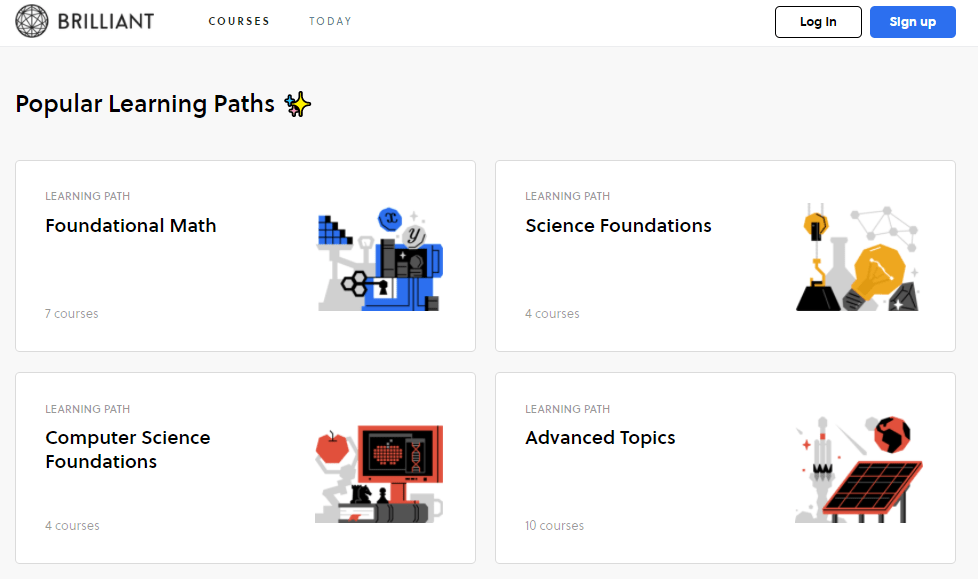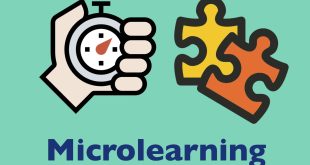This article is mainly concerned with discussing the e-learning school, its characteristics, advantages, examples and importance in education.
Table of Contents
What is an E-learning School?
E-learning school is based on education using the computer and the Internet as the mode of communication. Students typically learn using online resources, audio-visual materials, e-libraries, educational websites, and search engines.
Typically, e-learning is delivered through the Internet, where the school/university digitizes its system to make resources available on the website. Usually, communication happens through e-mails and online discussion groups/forums so that teachers and students can share ideas, questions, and assignments.
Join Skolera Now for FREE

What are the Characteristics of an E-learning School?
- Self-paced learning: E-learning has given learners the opportunity to learn in a flexible and self-paced manner. This is particularly convenient for students who have a hard time concentrating under pressure. This renders e-learning a great method for students who value convenience and flexibility. After all, taking your time is key to a constructive and productive learning process/journey.
- Learning is personalized to allow students to learn according to their different performance levels, skills, and aptitudes.
- Geographical barriers are eliminated to allow more education options for students who live far away from their university or school.
- Promotes the importance of self-learning. Self-learning helps build students’ character and prepare them for the work environment. After all, self-learning is essential to the development of their academic performance. E-learning particularly helps boost the skill of self-learning as teachers have started to give more thought to student-centred learning approaches that prioritize students and include them in the learning journey.
- Availability of learning materials: If the school is using a Learning Management System to unify all learning operations, then learning materials are usually stored on a cloud. This allows teachers to upload a myriad of learning materials for students. Instructors may also advise on websites to act as extra educational resources. These can be in the form of books, articles, movies, presentations, ebooks, guidelines, and other forms of educational content.
- Flexible schedule: A great benefit of e-learning is the ability to study from anywhere around the globe and at any time. This is particularly useful for overseas students. Students might easily adapt their class times to suit their schedules, and they can learn from anywhere in the world. E-learning is a great convenient experience; it appeals to students who have part-time jobs or graduates who want to expand their expertise in different industries.
What are the Types of E-learning?
- Synchronous Learning: This type of e-learning school is carried out as students attend classes using video conferencing platforms simultaneously with the instructor who is teaching. This type is beneficial for those that demand immediate feedback and interaction from their teachers. It can also simplify teachers’ workload as they can use online discussions as the core of their subject curricula.
- Asynchronous Learning: This type does not need for the student to attend online classes. Instead, the student may learn through pre-recorded lessons, interact with their teachers through emails and discussion platforms, and access online resources like textbooks through virtual libraries. This kind of learning is quite advantageous for those who love learning at their own pace in a manner that suits their capacity for learning.

- Hybrid/Blended: This form of learning benefits both the teacher and the student, it is a mix of the benefits of online and traditional classes. As a teacher, you can achieve this technique if you include online learning resources in the real class. Students often prefer this type of learning as it encourages them to better interact with the teacher while feeling like they are within a real classroom experience.
- Collaborative: This is based on group or peer learning where students learn through class techniques like discussion, peer evaluation, group activities, and debate-based lessons. Several Learning Management Systems offer collaborative learning features like easy-to-use dashboards where they can interact within a unified system.
Examples of E-learning
Whether you’re a kindergarten, high school, or college teacher, there are several options of software and apps that implement e-learning. You’ll find e-learning software for subjects like English, Mathematics, Science, Coding, and more!
Read Along is an excellent alternative for your classroom needs if you’re a teacher of early-year children and you need solid software that helps your students practice reading. It is appropriate for students aged 5 and above since it assists them with reading as it provides instant verbal and visual clues while they read the narrative aloud.
The best part about this app is that the app’s creators are continually adding more languages, adjusting their system based on user input, and expanding their book selection. In addition to English, the app is available in Hindi, Portuguese, Spanish, Urdu, and other languages.
Read Along first determines the child’s reading level and then suggests acceptable content for each level. The app also includes incentive learning, which can be in the form of stars, badges, or milestones, to encourage youngsters to keep reading and enjoy their time.
Memrise is an e-learning software that is quite fun to use and doesn’t require you to use a textbook. Three concepts govern their philosophy: deliver valuable, real-world content, offer a tech-based learning experience, and promise an enjoyable and engaging language acquisition path.
They have phrasebooks for more than 16 languages available on their website to help language learners learn common phrases used by native speakers. This software will definitely appeal to students since it is free and user-friendly, and it includes a “Learn with Locals” option to improve pronunciation and speaking abilities.
They also feature a blog with hundreds of articles on language acquisition, frequent phrases, “What’s the word” editions, and other topics.
This website is a fantastic resource for children in elementary and middle school who want to learn about nature, science, animals, and other topics. National Geographic Kids offers films, games, and activities to teach children about the natural world.
Teachers may use this website to improve their students’ science, history, and geography skills. They have a variety of games and films, including How Things Work, Nature Boom Time, Destination World, and many others.
Parents may also purchase intriguing books, encyclopaedias, presents, and toys through their online store.
Do your students occasionally struggle with mathematical problems and equations? There’s an app for that! The software was built by a frustrated father who wanted to assist his children with their homework. He intended to create the software as a means to easily convey complicated subjects.
The software is simple to use; all you have to do is scan your problem or equation, and the app will handle the rest for you. It includes both the solution and the steps. It also includes tips and tricks to assist the student while studying.
The software is suitable for both second-graders and college students, as it covers a wide range of math topics; it covers calculus, trigonometry, statistics, word problems, etc.
Brilliant is a unique gamified learning platform that helps students to master difficult STEM courses in a fun and engaging way. Teachers, academics, and experts from Google and Microsoft make up the platform’s big team of course creators.
Scientific thinking, Algebra, Computer Science Fundamentals, Everyday Math, and Astrophysics, are among the myriad courses they offer.
This is a testimonial from Andrew Caddell, a student who uses Brilliant:
“Dropped out of college during my final semester after COVID hit and this program has been a godsend. Everything is learned at your own pace and you are free to hop around to whatever subject you may be curious about on any given day. The lessons are bite-sized and intuitive with helpful explanations for when things don’t quite click. 10/10 would recommend!”
Khan Academy is a non-profit educational organisation. It is founded by Sal Khan, an American educator who started his project to assist his relatives with their studies. The goal of Khan Academy is to complement and provide video-based courses and practice exercises to help students with their studies.
The Academy is committed to empowering students by delivering a customised learning experience that allows them to learn quickly and effectively.
The website provides lessons in a variety of K-12 and K-14 subjects, including history, math, physics, economics, SAT prep, and more.
One of Khan Academy’s biggest advantages is its free yet comprehensive materials, which are appropriate for students, instructors, and parents alike. Teachers may log in to their dashboard and view performance data for both their individual students and the whole class.
Read more: 15 Free Educational Apps for Students
Advantages of E-learning in School
This next section of the article is concerned with listing the myriad benefits of using e-learning at school.
-
Availability of resources and materials
-
Adaptable schedule
-
Enjoyable learning experience
-
Reasonable costs
-
Engages the parents in the learning journey
-
Easy-to-use and friendly student and teacher dashboard
8 Benefits of Virtual Education You Never Knew Before
Why is E-learning Important in Education?
-
Impact on Students
E-learning has several features that make it appealing in the field of education. One of the key essential characteristics of e-learning is that it caters to the needs and skills of each student. In a traditional classroom, it is nearly impossible to ensure that all students retain and comprehend information equally.
The case is quite different with flexible e-learning as teachers assess each student according to their cognitive capacities.
In an e-learning atmosphere, the student may select his or her subjects and set his or her own learning technique.
In terms of time management, e-learning is also quite useful. Unlike physical classrooms, which have preset times for attendance, e-learning classrooms allow students to attend at whatever time they choose.
Students can attend a lesson at 7:00 a.m. or even at 12:00 a.m. As most e-learning systems are cloud-based, learning is much easier.
Learning necessitates the use of evaluation and assessment. Teachers usually juggle a variety of activities, such as planning classes, teaching those classes, supervising in duty time, creating assessments, and so on.
Teachers are frequently too preoccupied to correct an exam for 30 or more pupils in a single week. As a result, students may become confused and irritated if the class moves on to a new topic before finishing the prior one.
Tests are prepared and corrected automatically and on a daily in an e-learning system, thus giving students the option to get test feedback on a frequent basis.
-
E-learning in Teaching
E-learning as a system is quite advantageous for teachers for a number of reasons. One benefit is that the e-learning platform takes care of administrative tasks for teachers. This means that the system tools can handle daily tasks like collecting homework assignments, preparing quizzes and taking attendance.
Another way the system makes teachers’ lives simpler is by improving teaching quality and, as a result, student achievement.
To allow for a more engaging educational experience, teachers might switch up their teaching strategies and forms of presentation.
Visuals and animated classes, for example, may help certain pupils learn more effectively. To enhance student participation, teachers might incorporate movies, presentations, and educational activities into their curriculum.
A popular Chinese proverb says “Teachers open the door, but you must enter by yourself.” E-learning technologies can help teachers foster student independence and research abilities.
Students may now comfortably surf the internet thanks to e-learning schools. They can use the internet to learn extracurricular material because every information is available on the internet.
Nowadays, students are no longer reliant on their lecturers to provide them with knowledge. This will aid in the development of the self-learning abilities that pupils so desperately require. Students and instructors benefit since it not only reduces teacher strain but also broadens students’ knowledge beyond the classroom.
Advantages and Disadvantages of Virtual Classrooms – Beginning of a New Era
What are the 5 Approaches to E-learning?
If you’re a teacher and you’re confused about how to switch to e-learning techniques, it is important at first to understand the 5 approaches to e-learning.
They are generally based on the concept of “differentiation” which means adjusting instruction to meet individual students’ needs.
-
Diffuse
This approach is when the teachers give the same content to students but provides them with different approaches to understand it.
-
Self-directed
Here, content is based according to students’ choice as they receive different content through a system of self-selection.
-
Naive
This approach is centred around the computer which determines the course of differentiation, not the user.
-
Boolean
Here, the software is responsible for determining decisions to be taken using Boolean logic, which is a form of algebra where values are either true or false.
This approach can be used to adjust content for different students.
-
Model-based
For this approach, there is a merge between expert opinion and existing data to generate ideas for how content might be differentiated.
This article attempted to tackle the different facets of e-learning – an educational technique that is indispensable in today’s fast-paced learning environment. Here, we discussed the concept of e-learning, its advantages and possible approaches to use when implementing e-learning in a school.
Get started Skolera for FREE Skolera LMS Blog Educational Technology Articles and News
Skolera LMS Blog Educational Technology Articles and News











